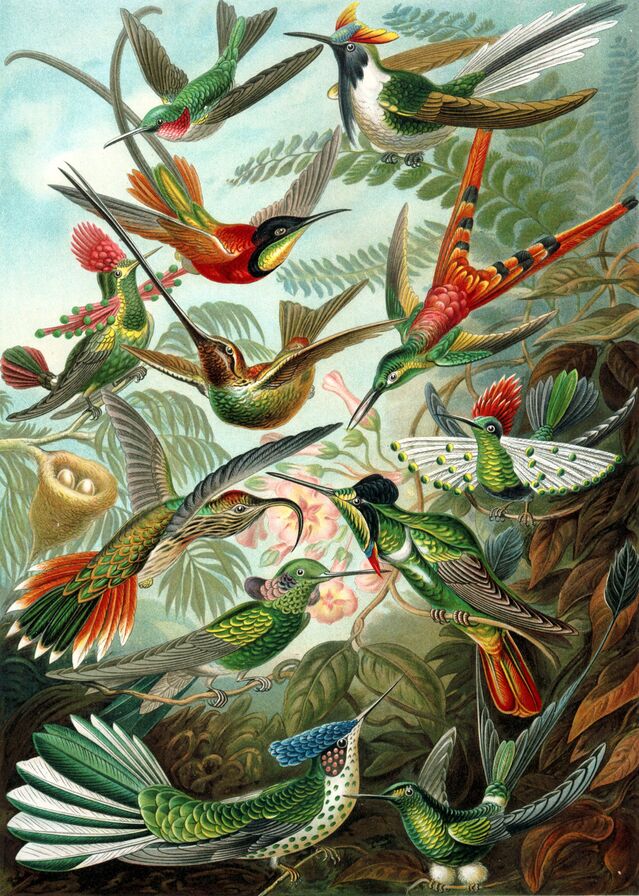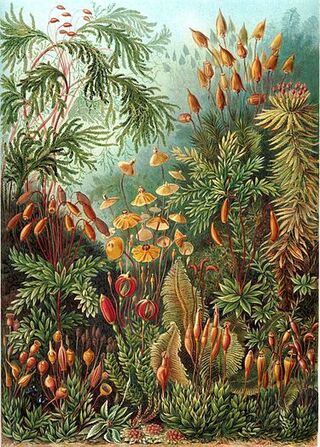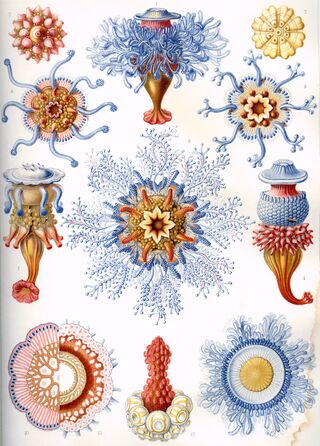Environment
Reconnecting with Wonder: When Were You Last Amazed?
How to rediscover the marvelous — and why we need to do it now more than ever.
Posted July 28, 2021 Reviewed by Chloe Williams
Key points
- Children connect effortlessly with their sense of wonder, but as adults, people's ability to be astonished shrinks.
- Wonder requires people to slow down. It also encourages an exuberant feeling of expansion and may help offset heavy emotions, such as worry.
- Reflecting on when one last experienced wonder and how to reconstruct one's feelings at the time can help people reconnect with wonder.

The first time I saw a hummingbird I was nine years old on a camp road in Maine. A tiny creature with an emerald head, ruby breast, and propeller wings whizzed in front of my face, hovered for a second, and then disappeared into the brilliant morning light. I was dumbfounded. Had I been visited by an angel? Or Tinker Bell? My body tingled. Everything around me sparkled with new meaning. The entire landscape vibrated with aliveness.

This event was brief but spectacular, and I have never forgotten it. The veil between the ordinary world and the extraordinary had been lifted, and I was given a glimpse of something mysterious, enchanting, and yet concretely real. The moment didn’t last. Earthly life quickly regained its familiar contours, and I returned “to my senses,” but some knowledge of the matrix of life and my place in the biosphere had been laid down in me.
This is what it feels like to be touched by wonder: amazement, astonishment, fascination. Without wonder, the dark clouds of gloom, alienation, and loneliness sweep in.
Wonder May Be the Antidote to Our Heavy Emotions
For the past two months, this blog has been dedicated to exploring anger with renowned Jungian analyst and scholar Dr. Murray Stein. The pandemic, the devastating effects of climate change, the spread of violence on most continents have put us — to use the terms of another Jungian analyst James Hollis — into the “swamplands of the soul.” Might not this be the perfect time to resurrect the value of wonder as an antidote, or “complementary medicine,” to the heavier emotions of our time?

I’m not suggesting wonder as a breezy spiritual path that, to use a cultural cliché, keeps us “in the Light.” Think of wonder as a hard-wired instinct and the true birthright of our species. Wonder is worry’s more light-hearted twin. Science locates wonder in a complex network of interactions within the brain that set off dopamine reactions induced by pleasurable feelings and activity in the hippocampus, the storehouse of long-term memory. Curiosity — the impulse to discover new things — is wonder’s companion.
Children connect effortlessly with their sense of wonder, but as adults, we become bound to our habitual perceptions of reality. The scope of our curiosity and our ability to be astonished shrinks, but wonder enlarges our being and connects us with a vast cosmos of marvel and beauty. We are built to respond to marvel and beauty, to the animate nonhuman universe in which we are embedded.
As the poet Stanley Kunitz, an avid gardener into his 90s, remarks in The Wild Braid: A Poet Reflects on a Century in the Garden: “The universe is a continuous web. Touch it at any point and the whole web quivers.”
As we venture out into our communities after the pandemic, a resurgence of wonder encourages an exuberant feeling of expansion. Confinement’s opposite is freedom, and if we let ourselves pause and pay attention, we may notice on our daily walk the astonishing rainbow hues of a pigeon’s breast. How did that happen, we might wonder. Or we might consider the miracle of any creatures built for flight, from honeybee to bat. Or ponder the strength and determinations of a single dandelion pushing up between cracks in the walk. Why dandelion and not crabgrass? A dozen more questions arise.
Wonder Requires Pause
Wonder asks us to slow down, to contemplate, to dream in reverie. It asks for our focus and attentiveness as well. It may unexpectedly inject itself into our lives, as the hummingbird whirled into mine, but if we aren’t paying attention, miracles will be missed. Wonder requires the cooperation of our inner world to meet the outer world with reverence and fascination.

In his book The Philosophy of Wonder, Dutch philosopher Cornelius Verhoeven stated:
“More happens in wonder than in doubt. Haste is a total lack of interest,” Verhoeven continues, “for interest means precisely to dwell in between. . . In contrast to pausing wonder, haste is a passing by which misses everything.”
“And now I have gathered six or seven deep red, half-opened cups of petals between my hands,” writes the poet Mary Oliver in her poem “Count the Roses.”
“And now I have put my face against them
and now I am moving my face back and forth, slowly…
Eternity is not later, or in any unfindable place.
Roses, roses, roses, roses.”
Oliver is a poet of praise, gratitude, and supreme wonder, in love with the particularity of the world. For her, an intimate reciprocity exists between her and her environment. Here she is writing in her essay “Upstream” about a tree in her beloved Blackwater Woods:
“It lives in my imagination strongly that the black oak is pleased to be a black oak. I mean all of them, but in particular one tree that leads me into Blackwater, that is as shapely as a flower, that I have often hugged and put my lips to. Maybe it is a hundred years old. And who knows what it dreamed of in the first springs of its life, escaping the cottontail’s teeth and everything dangerous else. Who knows when supreme patience took hold, and the wind’s wandering among its leaves was enough of motion, of travel?”

If Mary Oliver has her gaze fixed on the minutia of rose petals or the golden eye of a gull, Brian Greene, theoretical physicist, mathematician, and chairman of the World Science Festival, understands that humans are “bags of particles” that are organized in a unique way, as he notes in Until the End of Time: Mind, Matter, and Our Search for Meaning in an Evolving Universe:
“When you recognize that we are the product of purposeless, mindless laws of physics playing themselves out on our particles — because we are, all, bags of particles — it changes the way you search for meaning and purpose: You recognize that looking out to the cosmos to find some answer that’s sort of floating out there in the void is just facing the wrong direction. At the end of the day, we have to manufacture our own meaning, our own purpose — we have to manufacture coherence . . . to make sense of existence. And when you manufacture purpose, that doesn’t make it artificial — that makes it so much more noble than accepting purpose that is thrust upon you from the outer world.”
Clouds, trees are also made of particles. In fact, all earthly matter is composed of the same particles that compose us. Greene’s amazement, wonder, and thrill flow from the recognition that the particles which make up human beings have evolved to have consciousness, to become a species — the only species that contemplates its own mortality and can produce a Beethoven and an Einstein.
How to Reconnect with Wonder:
If you are interested in welcoming more wonder into your days, consider these questions:
- When was the first time you remember experiencing wonder?
- Where were you? What happened?
- What feelings do you associate with the event?
- Can you reconstruct the feelings now?
- Write the word WONDER at the top of a page.
- Begin the first sentence with the words "On that day."
- Write for 10 minutes without stopping.
- What have you discovered?




